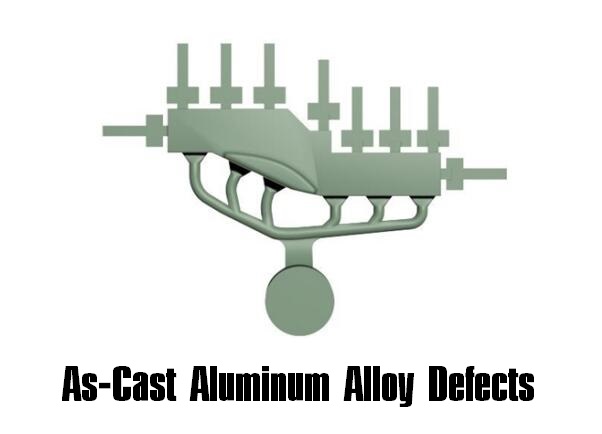Thin Wall Aluminum Alloy Die Castings Defects Research - Reasons and Measures of As-Cast Aluminum Alloy Defects
Compared to ordinary metal casting, thin wall die casting is a manufacturing process that can make castings with superior strength-to-weight ratios. The thin wall aluminum die castings are widely used in automobile body structures due to the lightweight. However, the production of aluminum casting with thin walls is prone to defects and lead to unstable mechanical properties. In this article, we’ll talk about the thin wall aluminum die casting defects and analyze the reasons and solutions.

Typical Defects of Thin Wall Aluminum Die Castings and Their Reasons, Measures
The defects can be observed from metallographic diagrams, which obtained through the research on the as-cast structure of the aluminum alloy die cast parts. The typical defects of thin-wall aluminum die casting parts.
1. Oxide inclusions
Reason: the metal oxides in contact with molten metal or added metal oxide not completely melted during the smelting process.
Measure/Solution: increase the times of filtrations or increase the number of filter meshes in the subsequent melt preparation process, and use a denser filter to filter the melt many times
2. Shrinkage cavities
Reason: generally in the last solidified part of the center of the die casting, and caused by insufficient pressurization. Shrinkage cavity will have a negative impact on the mechanical properties of the die casting, and become the source of cracks when the parts are stressed, leading to parts fracture.
Measure/Solution: the holding time should be increased to make the obtained die castings denser.
3. Segregation
Reason: the segregation is because the composition of the molten metal is uneven, that is, during the smelting process, the melt is not uniformly stirred, which makes the corrosion resistance of the metallographic sample poor and prone to corrosion. Another reason is that the unreasonable cooling system causes the temperature field is formed in this area during the solidification process, resulting in forming segregation. The microsegregation formed by the eutectic structure will also cause the mechanical properties of the as-cast alloy to decrease.
Measure/Solution: the stirring time should be increased during the heat preservation of the melt to make the refiner and alloy elements mixed more adequately. In addition, the temperature difference in this area should be optimized or the distribution of cooling pipes in this area should be modified.
4. Gas entrainment defect
Reason: during the die casting process, when the molten aluminum fills the cavity at high speed, there is the gas that has not been removed or is engulfed in the melt in the cavity. The gas is wrapped by the molten aluminum to form gas entrainment defects. The overall performance of the product will be influenced, if the product with gas entrainment defect is put to use, it is prone to brittle fracture and other dangers when subjected to a large load.
Measure/Solution: the gating system needs to be optimized to reduce the entrainment of gas in the cavity. Better conditions can be provided during production, such as providing an electromagnetic stirring system to homogenize the composition of the die casting, or using a high vacuum die casting system to reduce or even eliminate gas entrainment.
In order to avoid the occurrence of porosity, shrinkage, and other defects, it is necessary to control the gas entrainment caused by high-pressure injection in the die casting process. Therefore, if the conditions permit, the process of reducing the air content of the die casting should be adopted to reduce the porosity of the die casting per unit volume and increase the effective load area of the die casting. At the same time, according to the shape of products, reasonable design of the gating system and pouring temperature gradient can reduce the occurrence of shrinkage cavity and maintain stable mechanical properties of products. Within the scope of cost, the die casting process with high vacuum and high pressure should be used to produce aluminum alloy die castings. Different pouring system and pouring temperature should be designed according to different parts, so as to greatly reduce shrinkage cavity and air hole, so that the product quality of aluminum alloy die casting is better. At Diecasting-mould.com, we provide quality thin-wall die casting services for your aluminum part needs. Contact us for more details.

